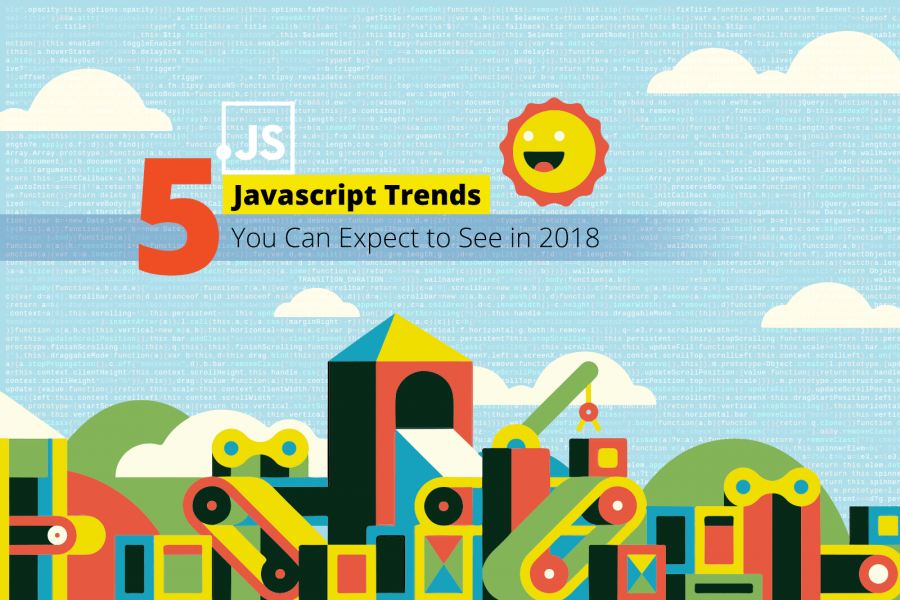
According to Stack Overflow, JavaScript was the most popular programming language in 2017. Equipped with frameworks and libraries that are far more powerful and flexible than some other languages, its predicted dominance in the new year won’t come as a surprise.
But what else can we expect from the world of JavaScript in 2018? Let’s take a look.
1. VueJS Will Take on ReactJS
While none of us expected VueJS to ever compete with ReactJS, 2017 changed all of that. If you paid attention to the developer hype last year, it will come as no surprise that VueJS is about to take on ReactJS.
While ReactJS is financially backed by social media giant Facebook (who can actually sue you for using ReactJS to directly compete with them), VueJS is building a strong developer fanbase free from licensing issues.
It’s also easy to learn, lightweight, and comes with good state management and routing, and some other great tools built-in. But at the moment, the community behind it doesn’t even compare to ReactJS, but that might change over the course of the next 12 months.
This is because it’s much easier to get on board with VueJS than ReactJS (which comes with licensing issues). So developers going forward might be more inclined to start every project with VueJS to keep things simple.
2. ReactJS Might Become More Popular Than AngularJS
The race is heating up between AngularJS and ReactJS and if Google Trends is anything to go by, ReactJS might take over the top spot in 2018. While both JavaScript frameworks have their own legions of fans, the numbers are pretty close.
For AngularJS developers who just don’t want to have anything to do with ReactJS, VueJS might be a better option to keep you working in the future. As the syntax is quite similar to AngularJS 1, it shouldn’t be difficult to learn.
3. Single Page Applications (SPAs) Will Be More Popular
While SPA comes with known performance and SEO related issues, SPAs based on JavaScript have been consistently growing in popularity among web developers. This is probably driven by the fact that SPA can work seamlessly across devices while cutting down development time.
However, at this juncture, we can only predict its popularity within the development community because it’s impossible to speculate about its total use. We will just have to see how it plays out in the months to come.
4. Innovative Companies Will Bet on GraphQL
Like REST, GraphQL is a query language for modern APIs. Last year, it shocked the development community as it was quickly embraced by some of the world’s leading companies:
- Github
- NYTimes
- Spotify
- Yelp
As it managed to live up to all the hype, you can expect more GraphQL APIs to come out this year without a REST option. As highly innovative enterprises embrace and incorporate GraphQL, you can expect many others to follow their lead in 2018.
As startups also begin to move toward GraphQL, it will be important for software engineers to start learning it to remain relevant. At the same time, I’m not saying that REST is dead, but it might fade away in the near future.
5. Storybook Will Play a Significant Role in the New Year
Storybook was probably the star of 2017 and you can expect it to keep rising in the months to come. As a robust environment for developing, defining, and testing UI components, it became hugely popular about six months ago (with a lot of help from the open source community).
It provides real value for developers as it functions almost like a living UI style guide that’s incredibly useful when it comes to building and testing UI components in isolation.
A great example of Storybook in action is Airbnb’s date picker. Expect to see more innovations like this going forward.
It’s a great time to be a JavaScript developer because you can now easily develop apps for both mobile and desktop platforms. But as we plan ahead for the new year, software engineers need to keep these JavaScript trends in mind to be at the cutting edge.









